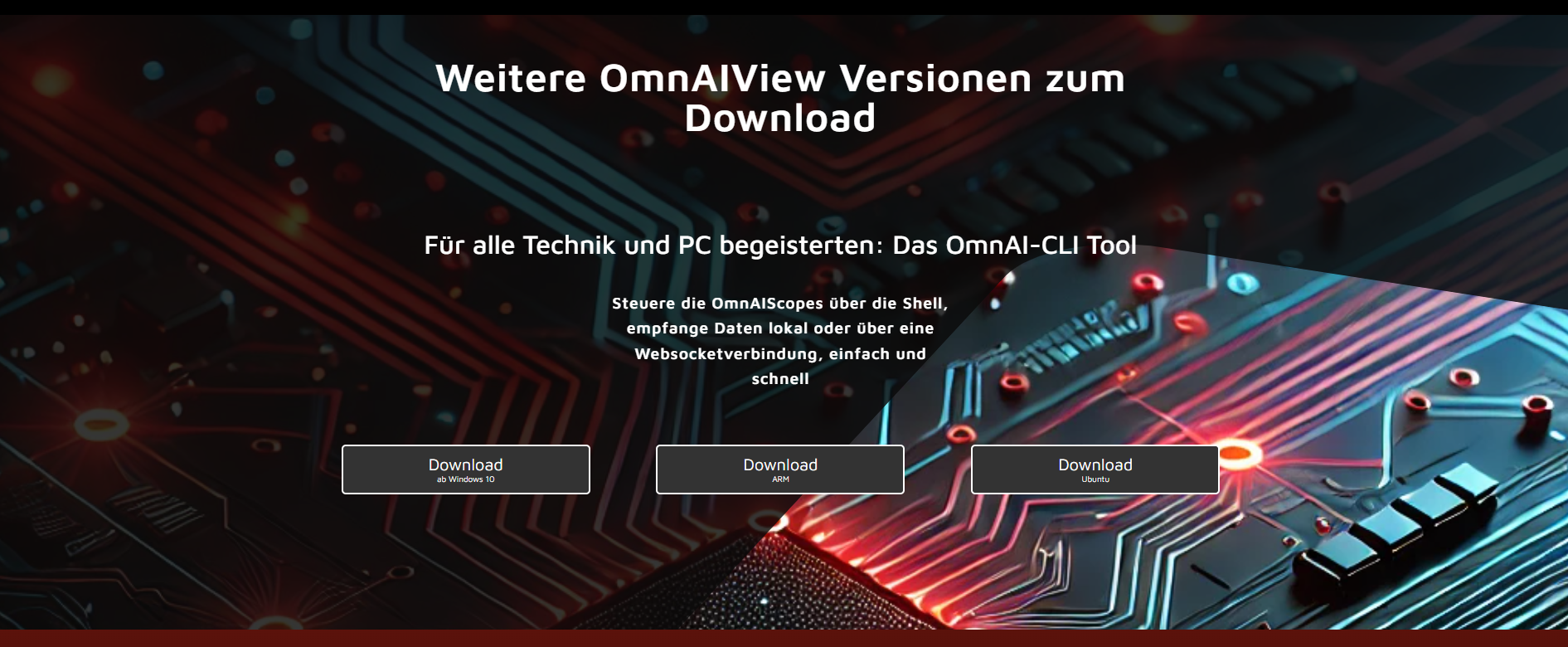– The OmnAIView Story –
Imagine having half a dozen sensors on your desk—an oscilloscope, two CAN probes, a weather station, maybe a Li-Io battery monitor. They all speak slightly different protocols, yet you want one window that pops open, shows every curve live, and lets you say, “Yep, that’s the spike I was hunting.”
That window is OmnAIView, and this article shows how it is build in pure python.
What is OmnAIView ?
At its heart, OmnAIView is a modular Angular + Electron front-end designed to receive, visualize and analyze time-series data from multiple back-ends. Because it’s open source under the MIT licence, you can fork it, extend it and contribute your own ideas to the project. GitHub Key ideas:
- Backend-agnostic – talk to REST, WebSocket
- Analysis-ready – hook in your own algorithms or use the built-ins with one click.
- Desktop & Web – run in the browser during development, ship as a desktop app via Electron or Capacitor
Who builds OmnAIView ?
OmnAIView is crafted by the AI Gruppe, a data-driven collective from Germany that publishes mostly everything in the open. Issues, docs and road-map discussions all live on GitHub, so contributions are welcome—whether that’s a new chart type, documentation polish or a crazy data source.
A 250-line Python front-end – the minimal Python implementation
Angular isn’t everyone’s cup of coffee (thats were the current software is build in), but you still want visualize your data. That’s when the beauty of the design idea sparks .
If a server can answer two tiny endpoints…
-
- Get a list of devices in some format
- Get timestamps and values in some format
… and the Frontend has some DataSource interface that can
-
- Read the list of devices somehow
- Read the timestamps and values somehow
You can build the frontend in any language, for all datasources.
How to build the Python front-end in three minutes
For the easy way we setup a minimal example in python for you.
1. Clone the repository
git clone https://github.com/AI-Gruppe/OmnAIView_python_FE_minimalExample
cd OmnAIView-python
2. Create & activate virtual-env
python -m venv env
source env/bin/activate # Windows: env\Scripts\activate
3. Install min-deps
pip install -r requirements.txt
4. Fire it up !
python main.py
Join our Angular Open Source project on : https://github.com/AI-Gruppe/OmnAIView
Receiving data
To receive data that can be visualized in the application you need a server that can generate and send data via a websocket. To provide you with data server examples we build two :
-
- A Dev-DataServer generating a sinus and rectangular wave
- A real life example with the OmnAIScope→ an USB Oscilloscope as tiny as a finger
Receiving data from the Dev-DataServer
1. Clone the server
git clone https://github.com/AI-Gruppe/OmnAIView-DevDataServer.git
cd OmnAIView-DevDataServer/example_python
2. Create & activate virtual-env
python -m venv env
source env/bin/activate # Windows: env\Scripts\activate
3 Install min-deps
pip install -r requirements.txt
4. Fire it up !
python main.py
# -> "Server running on port 8080 (HTTP & WebSocket)"Back in the GUI choose DevDataServer, leave the defaults (JSON, 60 Hz), and watch the waveforms glide across the canvas.
Receiving real life data
1. Plug in your Scope via USB
2. Start the OmnAIScope DataServer :
– Download the executable for developer
In your shell start the exe via :
.\MiniOmni.exe -w
In the Python GUI pick OmnAIScope DataServer, click connect and select your source. Seconds later real life data flow over your screen . Here you can find the real life example :
Taking it further
Integrate your DataSource directly into the code by adding your datasource implementing the DataSourceStrategy or clone the repo and build your own frontend. The repo is Open Source available ( as everything else ) and shows the steps needed build it yourself.
Further Resources for Developers
You want to go deeper into data-driven telemetry & visualisation with OmnAIView in Angular?
You’re in the right place!
Our developer blog is packed with tutorials and deep-dives that show you how to wire up modern measurement tech to any backend.
But that’s just the beginning:
- Main GitHub Repository:
Clone the source, start the project and open pull requests—everything lives in the open. - Dev Data Server:
A minimal Python implementation that demonstrates the required REST / WebSocket interface. - Issue Tracker & Roadmap:
See what’s next, report bugs or vote for features. - Developer Discussions:
Join the conversation, ask questions and share best practices with the community. - Project README:
Quick-start commands, architecture overview and contribution guidelines—all in one place.
Ready to ship your own data source? Fork the repos, hack away and show us what you build—PRs are welcome!
Whether you’re an embedded hacker or a full-stack engineer—here you’ll find the right tools and docs to level up your telemetry game.
Our motto: If we can measure it, you can improve it!


0 Comments